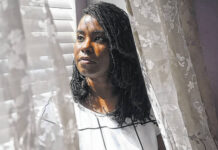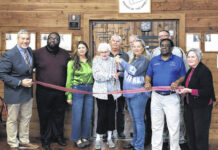Many have started back to school this month and are falling into the routine of “hitting the books.” Younger students may never have known a time in which a backpack was filled with heavy books and not a tablet or when “opening a book” meant to physically turn the pages.
Bowker is the official ISBN Agency for the United States, U.S. territories and Australia, and a recent report shows how much the book industry has changed. In 1984, the year my first book was published, fewer than 75,000 titles were published. Today that number edges close to 1 million, fueled by small publishers and self-publishers.
Bowker’s 2015 Self-Publishing in the United States Report states that 727,125 ISBN’s were issued to self-publishers, and this figure does not include traditional publishers. Of those, 573,965 were printed, representing a 375 percent increase over 2010 (114,215). CreateSpace, owned by Amazon, has fueled much of that growth, printing 423,718 titles in 2015. Their closest competitor is Lulu, which printed 46,972 titles in that same period.
In 2010, 38,763 self-published e-books were generated compared with 153,160 in 2015, and that actually showed a decrease from 172,511 in 2014.
While the number of releases is unprecedented, the means of selling books have undergone dramatic changes and not all have been positive. Many remember Waldenbooks at Biggs Park Mall, or B. Dalton, Borders and independent book stores elsewhere. Today all Waldenbooks and B. Daltons are closed, having been acquired by major chains and then devoured.
Borders is now closed as well and Barnes and Noble has undergone a metamorphosis, offering more games, toys and non-reading materials than ever before.
For the reader, this means a shift in the way they purchase reading material, much like the music industry experienced. Many older music lovers will fondly remember browsing through LP’s, cassette tapes or DVD’s in music stores. Today most music is purchased electronically; many listeners have never known a time in which they couldn’t download a song.
Books have been moving toward that same paradigm. Amazon sells 64 percent of all books sold electronically and 67 percent of all e-books. (“Amazon Has Basically No Competition Among Online Booksellers,” The Atlantic)
While Barnes and Noble and other bookstore chains are dominated by the Big Four (Penguin Random House, Simon & Schuster, HarperCollins and Hachette) online booksellers sell more titles from all the other publishers. There are no mandatory standards, so it’s “buyer beware” for the reader. Some books published by indie presses are as good as the New York Times bestsellers — in fact, even self-published books are now making that prestigious list. Others are in serious need of professional editing.
Readers can discover exciting new authors and great books by listening to recommendations from others, especially book clubs and literary blogs. Amazon is a great place to see reader reviews; in fact, attempts by the author to influence reviews can get the author banned from Amazon for life. Those on social media like Facebook and Twitter will also find groups that cater to every imaginable genre.
And if you have read a book that you particularly liked — or one you didn’t — you can help other readers by writing an honest review.
Writing is not for the faint of heart; the process is painstaking, often excruciating, the road to success littered with pitfalls and predators. Only the most resilient authors will still be standing when the publishing industry finally completes the largest metamorphosis in its history.









